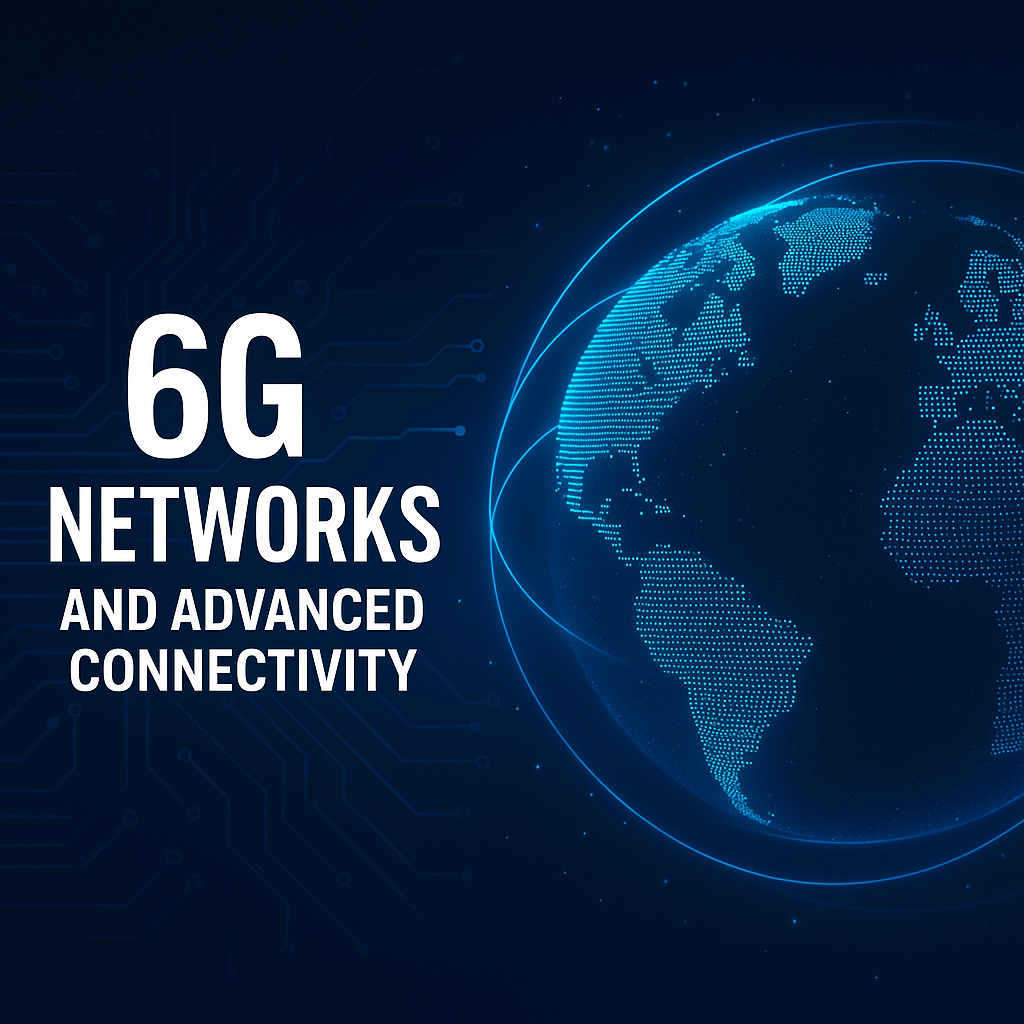
In the ever-evolving landscape of telecommunications, 6G networks stand as the next monumental leap, promising to redefine how we connect, communicate, and experience the digital world. As we transition from the widespread adoption of 5G, the horizon of 6G offers unprecedented speed, ultra-low latency, and transformative applications that could revolutionize industries and daily life.
Understanding 6G: Beyond Just Speed
While 5G brought significant improvements over its predecessor, 6G is poised to amplify these advancements exponentially. Key features anticipated in 6G networks include:
- Ultra-High Speeds: Potential data rates reaching up to 1 Tbps, enabling instantaneous downloads and seamless streaming of ultra-high-definition content.
- Minimal Latency: Latency as low as 0.1 milliseconds, facilitating real-time responsiveness crucial for applications like autonomous vehicles and remote surgeries.
- Expanded Coverage: Enhanced connectivity extending to remote and previously unreachable areas, including deep-sea and space environments.
- AI-Driven Networks: Integration of artificial intelligence for self-optimizing and self-healing networks, ensuring optimal performance and reliability.
- Terahertz Communication: Utilization of terahertz frequency bands to accommodate the massive data throughput demands of future applications.
Real-World Applications of 6G Networks
The capabilities of 6G are not just theoretical; they hold practical implications across various sectors:
1. Healthcare Transformation
6G’s ultra-reliable low-latency communication can revolutionize telemedicine, enabling real-time remote surgeries and diagnostics. Wearable and implantable devices can provide continuous health monitoring, transmitting data instantaneously to healthcare providers, thus enhancing patient care and accessibility.
2. Immersive Virtual Experiences
The high bandwidth and low latency of 6G will facilitate advanced virtual and augmented reality experiences. This can transform education through immersive virtual classrooms, enhance remote work with realistic virtual meetings, and revolutionize entertainment with lifelike gaming and virtual concerts.
3. Autonomous Transportation
6G networks can support the vast data exchange required for autonomous vehicles, ensuring real-time communication between vehicles, infrastructure, and pedestrians. This can lead to safer roads, efficient traffic management, and the advancement of smart transportation systems.
4. Industrial Automation
In manufacturing, 6G can enable real-time control of machinery and robots, enhancing precision and efficiency. The integration of AI and machine learning can lead to predictive maintenance, reducing downtime and operational costs.
5. Environmental Monitoring
6G’s extensive connectivity can support a vast network of sensors for environmental monitoring. This includes tracking climate changes, detecting natural disasters in real-time, and managing resources more efficiently, contributing to sustainability efforts.
Global Progress in 6G Development
India’s Ambitious Vision
India is positioning itself as a leader in 6G innovation. The government aims to contribute 10% of global 6G patents by 2027, reflecting a strong commitment to technological advancement and global collaboration. Source
International Collaborations
Collaborations between institutions like IIT-Hyderabad and Japan’s Sharp Corporation have led to successful tests of Beyond 5G and 6G wireless technologies, highlighting the importance of international partnerships in advancing 6G development. Source
Challenges on the Path to 6G
While the prospects of 6G are exciting, several challenges need to be addressed:
- Infrastructure Development: The deployment of 6G requires significant investment in new infrastructure, including the development of devices capable of operating at terahertz frequencies.
- Standardization: Establishing global standards for 6G is crucial to ensure interoperability and seamless integration across different regions and technologies.
- Security and Privacy: With increased connectivity comes the need for robust security measures to protect data and privacy in a highly interconnected environment.
- Environmental Impact: The energy consumption of 6G networks must be managed to minimize environmental impact, necessitating the development of energy-efficient technologies.
The Road Ahead
As we stand on the cusp of this new technological era, the development and implementation of 6G networks will require collaborative efforts from governments, industries, and academia. The potential benefits are immense, promising to transform various aspects of our lives and drive innovation across sectors.
For further insights into the evolving landscape of technology and its impact on society, explore our Science and Technology section.
Note: This blog post is a synthesized creation based on current trends and information in the field of telecommunications and does not reference specific proprietary content from ilunapishtu.com.
Frequently Asked Questions (FAQs)
1. What is 6G and how is it different from 5G?
6G is the sixth generation of wireless technology, expected to provide data speeds up to 100 times faster than 5G, with ultra-low latency and broader global coverage. It also integrates AI for self-optimizing networks and supports advanced applications like holographic communication and real-time brain-computer interfaces.
2. When will 6G be available to the public?
6G is currently in the research and development stage. Commercial deployment is expected between 2028 and 2030, with standardization likely by 2026–2027.
3. What are the key benefits of 6G networks?
Some of the major benefits include:
- Hyper-fast data speeds
- Real-time communication
- Advanced IoT and smart city infrastructure
- Enhanced virtual and augmented reality
- Wider and more reliable global coverage
4. How will 6G impact daily life?
6G will enable seamless remote work, immersive VR classrooms, telehealth surgeries, self-driving cars, and more interconnected smart devices—fundamentally transforming how we live, work, and interact.
5. Is 6G safe for human health and the environment?
While research is ongoing, regulatory bodies like the ITU and FCC will ensure 6G operates within safety limits. Energy-efficient technologies and sustainable infrastructure will also be a focus to minimize environmental impact.
6. How is India contributing to 6G development?
India has set an ambitious goal to contribute 10% of global 6G patents by 2027 and is investing in collaborative research with institutions like IIT-Hyderabad and international tech partners.
7. Will existing devices be compatible with 6G?
No, new devices will need to be developed to support 6G’s unique spectrum (including terahertz bands) and capabilities. Device upgrades will be essential for users to benefit from 6G.
